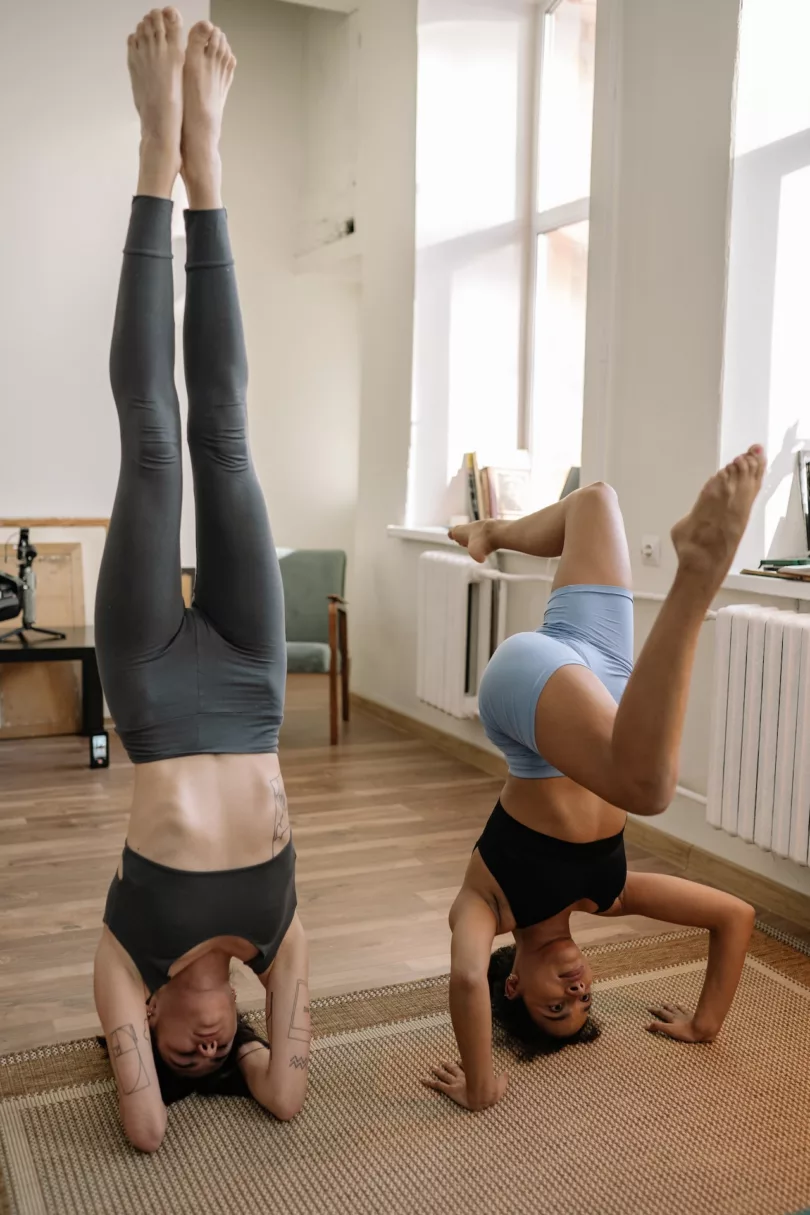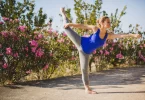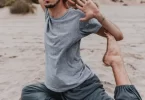Yoga is not just a physical exercise, it’s a way of life that connects the mind, body, and soul. As we progress in our yoga practice, we reach a point where we crave more challenging poses to deepen our practice. Advanced yoga poses require strength, flexibility, and focus. They challenge us both physically and mentally, helping us to reach a deeper level of consciousness.
In this article, we will discuss the 5 challenging yoga poses for advanced practitioners. These poses require a strong foundation in yoga practice and should only be attempted under the guidance of an experienced yoga teacher.
1. Bakasana (Crow Pose):
Bakasana or Crow Pose is an arm balance pose that requires strength, balance, and focus. This pose strengthens the arms, wrists, and core muscles. It also improves balance and concentration.
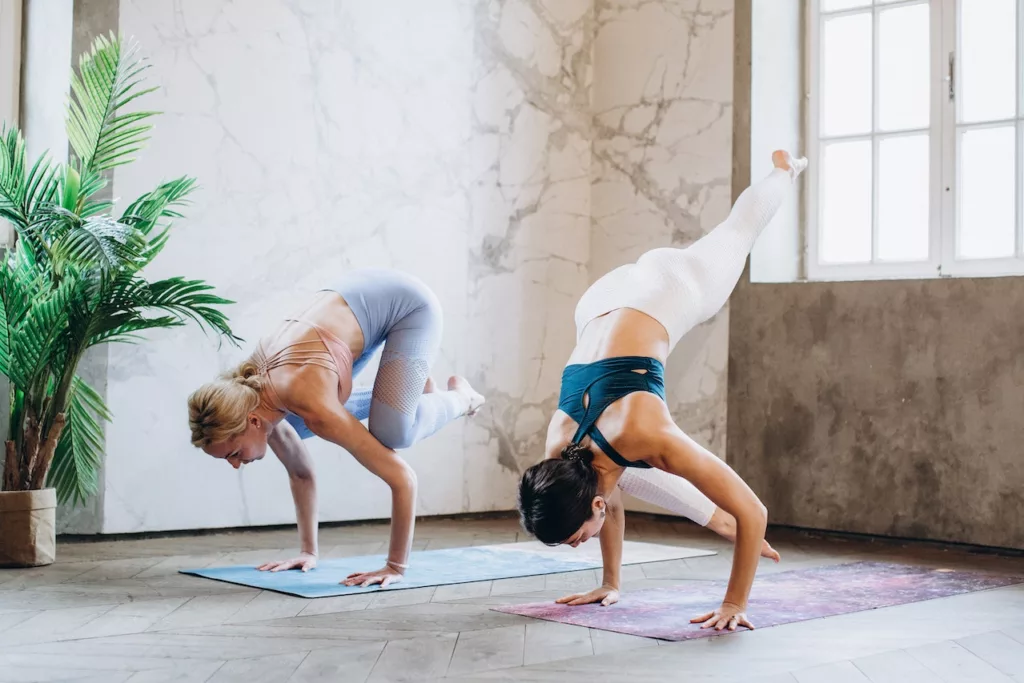
How to practice:
- Start in a squatting position with your feet hip-width apart.
- Place your hands on the ground, shoulder-width apart, with your fingers spread wide.
- Bend your elbows and place your knees on the back of your upper arms.
- Shift your weight forward and lift your feet off the ground.
- Keep your gaze forward and hold the pose for 5-10 breaths.
- To come out of the pose, slowly lower your feet to the ground and come back to the squatting position.
2. Pincha Mayurasana (Feathered Peacock Pose):
Pincha Mayurasana or Feathered Peacock Pose is an advanced inversion pose that requires arm and shoulder strength. This pose strengthens the arms, shoulders, and core muscles. It also improves balance, focus, and concentration.
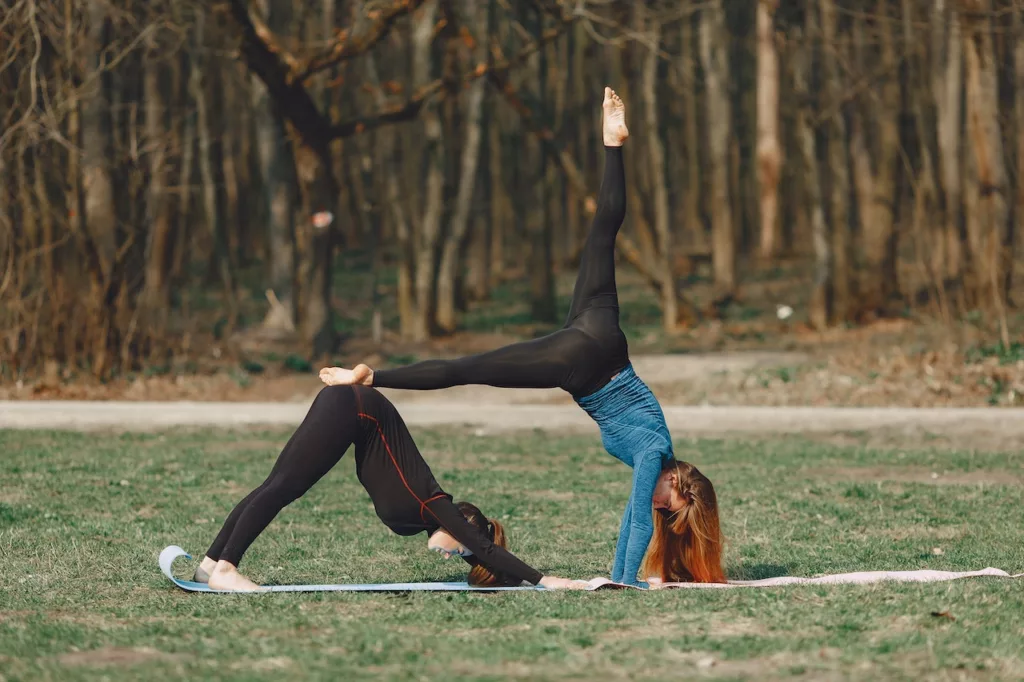
How to practice:
- Begin in a downward-facing dog pose.
- Place your forearms on the ground, shoulder-width apart, with your fingers spread wide.
- Walk your feet towards your head and lift one leg off the ground.
- Slowly lift your other leg off the ground and come into an inverted position.
- Keep your gaze forward and hold the pose for 5-10 breaths.
- To come out of the pose, slowly lower your feet to the ground and come back to the downward-facing dog pose.
3. Eka Pada Rajakapotasana (One-Legged King Pigeon Pose):
Eka Pada Rajakapotasana or One-Legged King Pigeon Pose is an advanced hip-opening pose that requires flexibility and strength. This pose stretches the hip flexors, quadriceps, and glute muscles. It also improves balance and focus.
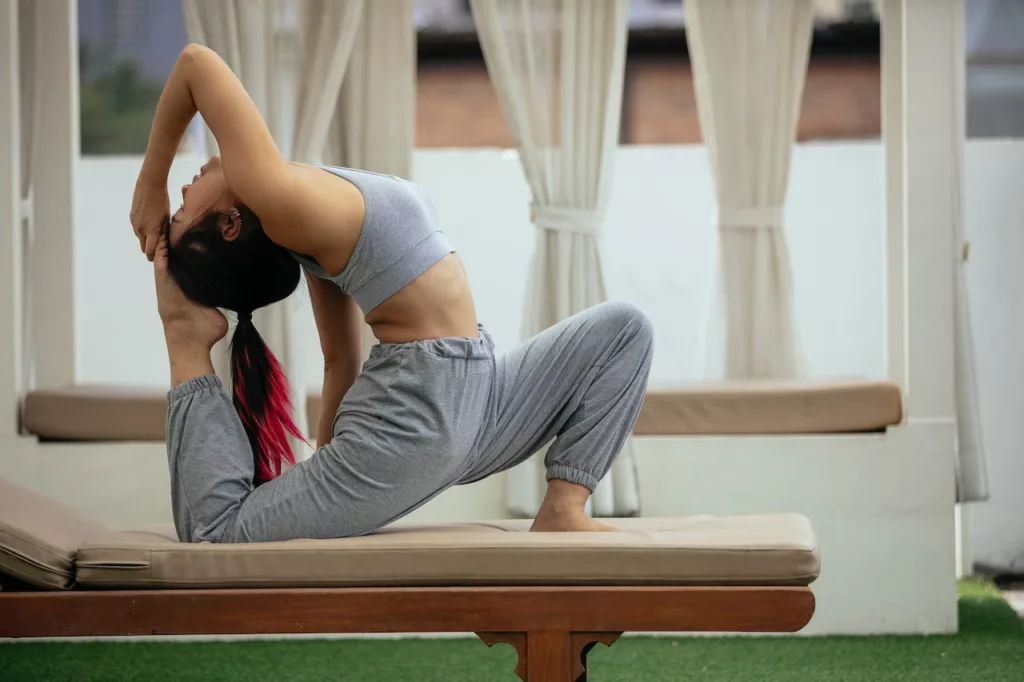
How to practice:
- Begin in a downward-facing dog pose.
- Bring your right knee towards your right wrist and place your right foot on the ground.
- Extend your left leg back behind you and place your left foot on the ground.
- Lower your upper body towards the ground and place your forearms on the ground.
- Keep your gaze forward and hold the pose for 5-10 breaths.
- To come out of the pose, slowly lift your upper body and come back to the downward-facing dog pose. Repeat on the other side.
4. Vrischikasana (Scorpion Pose):
Vrischikasana or Scorpion Pose is an advanced inversion pose that requires strength, flexibility, and balance. This pose strengthens the arms, shoulders, and core muscles. It also improves balance, focus, and concentration.
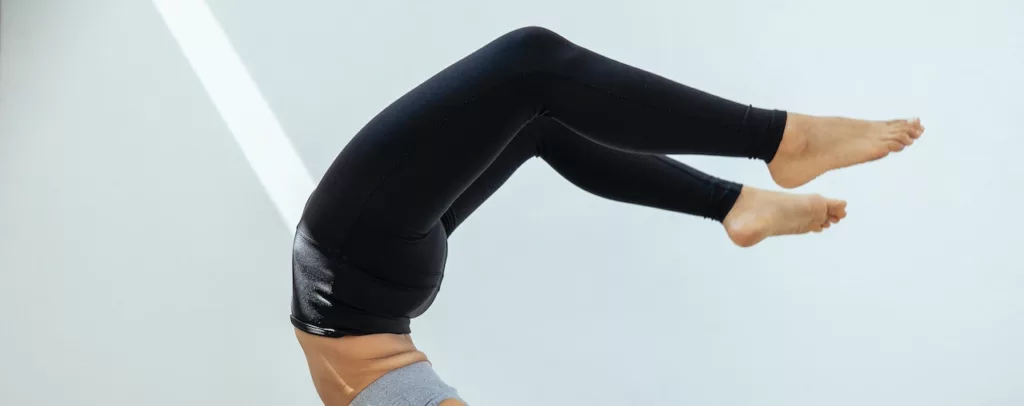
How to practice:
- Begin in a forearm plank pose.
- Walk your feet towards your head and lift your hips up.
- Place your feet on the ground, hip-width apart.
- Lift one leg off the ground and bring it towards your head.
- Slowly lift your other leg off the ground and come into an inverted position.
- Keep your gaze forward and hold the pose for 5-10 breaths.
- To come out of the pose, slowly lower your feet to the ground and come back to the forearm plank pose.
5. Sirsasana (Headstand):
Sirsasana or Headstand is an advanced inversion pose that requires strength, balance, and focus. This pose strengthens the arms, shoulders, and core muscles. It also improves balance, focus, and concentration.
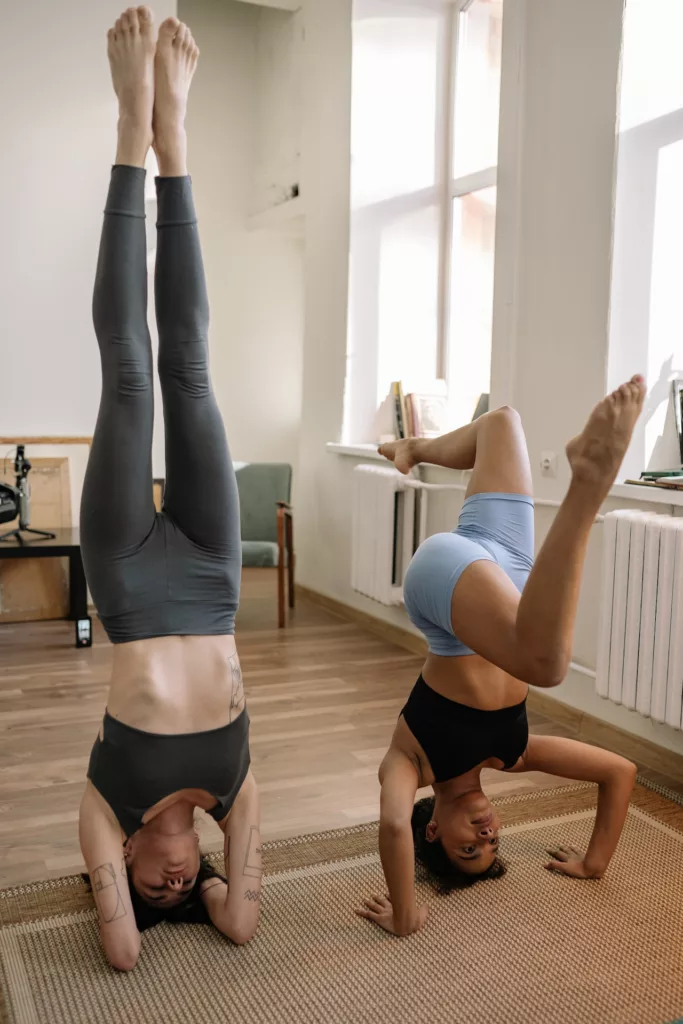
How to practice:
- Begin on your hands and knees with your forearms on the ground.
- Interlock your fingers and place the crown of your head on the ground.
- Lift your hips up and walk your feet towards your head.
- Slowly lift your legs off the ground and come into a headstand.
- Keep your gaze forward and hold the pose for 5-10 breaths.
- To come out of the pose, slowly lower your legs to the ground and come back to the hands and knees position.
FAQs:
Q. Can beginners practice these advanced poses?
A. No, these poses are for advanced practitioners only. Beginners should first develop a strong foundation in yoga practice before attempting these poses.
Q. Can these poses be harmful?
A. Yes, these poses can be harmful if not practiced under the guidance of an experienced yoga teacher. It’s important to listen to your body and not force yourself into the pose.
Related Article: 5 Easy Yoga Poses for Beginners Practicing with a Partner
Conclusion:
Advanced yoga poses require a lot of dedication and patience. They can be challenging, but the benefits they offer are immense. Practicing these 5 challenging yoga poses for advanced practitioners can help you take your yoga practice to the next level. Remember to practice under the guidance of an experienced yoga teacher and always listen to your body.

